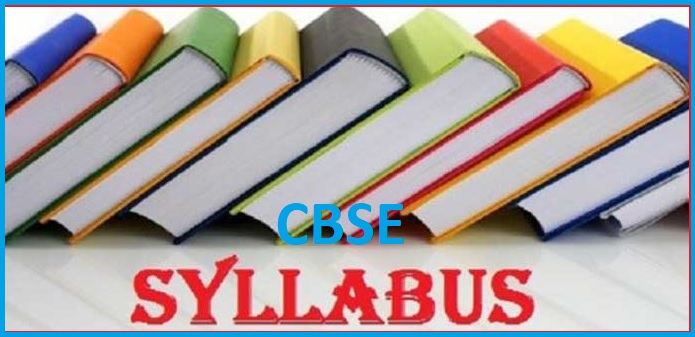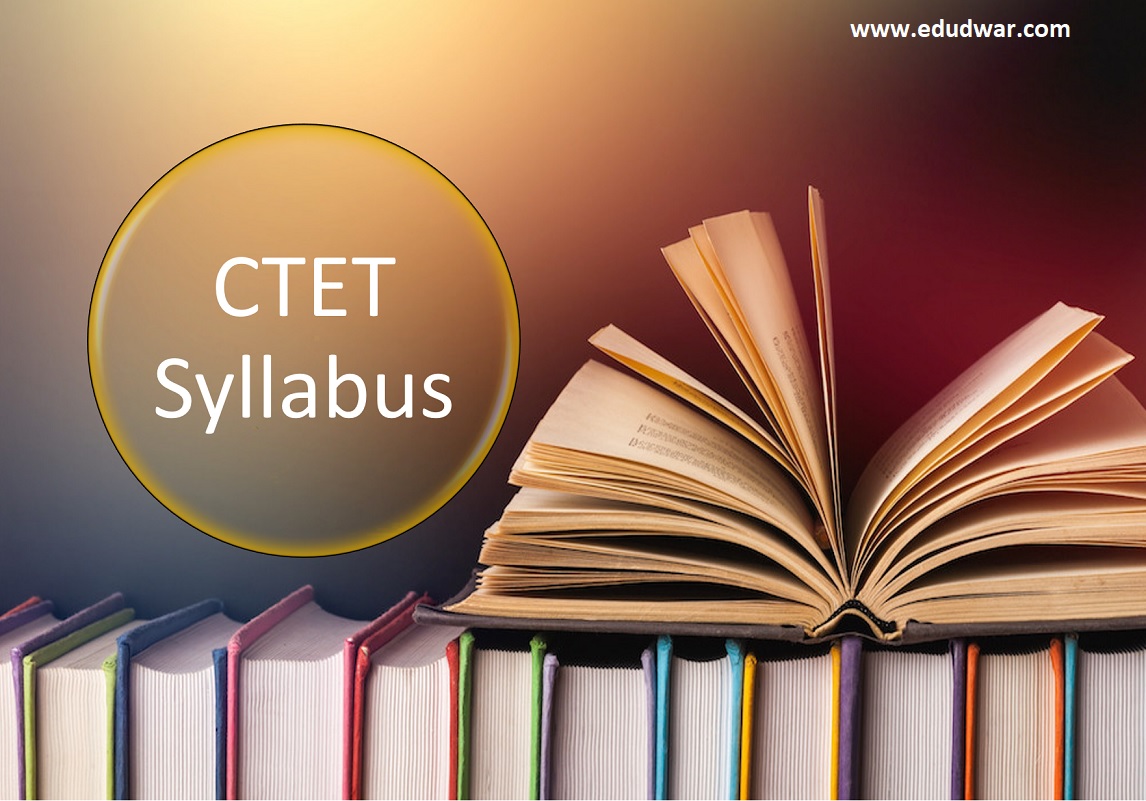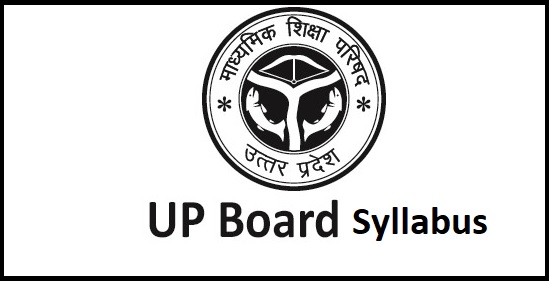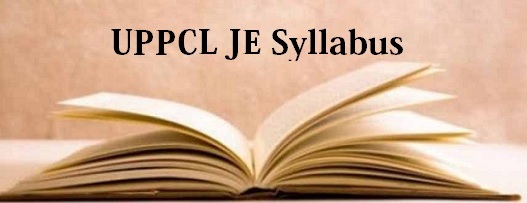Maharashtra Board HSC Maths & Stats Syllabus 2024-25

Maharashtra Board HSC Maths & Stats Syllabus is here to download for the academic session 2024-25. You can also download the Maharashtra Board class 11 and 12 Maths & Stats Syllabus PDF. The Maths & Stats syllabus prescribed by the board has been designed according to the National Curriculum Framework and guidelines provided in Focus Group on Teaching of Mathematics ultimate focus of which is to meet the rising needs of all categories of students.
Maharashtra Board HSC Maths & Stats Syllabus 2024-25
Part I
- Measurement of Angles
Need & concept, Revision of directed angle (+ve and –ve angles), zero angle, straight angle, angles in standard position, coterminal angles, angles in quadrant & quadrantal angles. Sexagesimal system, circular system, relation between degree measure and radian measure. Theorem: Radian is a constant angle. Length of an arc of a circle (s = r. , is in radians) (without proof). Area of the sector of a circle A = ½ r2. , is in radians (without proof).
2. Trigonometric functions
Need & concept, Trigonometric functions with the help of standard unit circle, signs of trigonometric functions in different quadrants, trigonometric functions of particular angles (00, 300, 450, 600, 900,
1800, 2700, 3600), domain and range of trigonometric functions, periodicity of functions, fundamental identities, graphs of trigonometric functions, Graph of
y = a sin bx, y = a cos bx, trigonometric functions of negative angles.
3. Trigonometric functions of compound angles
Introduction, trigonometric functions of sum and difference, trigonometric functions of multiple angles (upto double and triple angles only), trigonometric functions of half angles.
4. Factorization Formulae
Introduction, Formulae for conversion of sum or difference into products, formulae for conversion of product into sum or difference, trigonometric functions of angles of a triangle.
5. Locus
Introduction, Definition and equation of locus, points of locus, shift of the origin.
6. Straight Line
Revision. Inclination of a line, slope of a line, equation of lines parallel to co-ordinate axes, intercepts of a line, revision of different forms of equations of a line, slope-point form, slope-intercept form, two point form, double intercept form, other forms of equations of a line, parametric form, normal form, general form, Theorem 1 : A general linear equation Ax + By+ C
=0, provided A and B are not both zero, simultaneously, always represents straight line. Theorem 2 : Every straight line has an equation of the form Ax +By + C = 0, where A, B and C are constants (without proof), Reduction of general equation of a line into normal form, intersection of two lines, parallel lines, perpendicular lines, identical lines, condition for concurrency of three lines, angle between lines, distance of a point from a line, distance between two parallel lines, equations of bisectors of angle between two lines, family of lines, equation of a straight line parallel to a given line, equation of a straight line perpendicular to a given line, equation of family of lines through the intersection of two lines.
- Circle and Conics : Revision, standard equation, centre-radius form, diameter form, general equation, parametric equations of standard equation, Conics Napees – Intersection of Napees of a cone and Plane, introduction, focus-directrix property of parabola, ellipse, hyperbola, parabola, standard equation (different forms of parabola), parametric equations, ellipse, standard equation, hyperbola, standard equation, parametric equations. Application of conic
8. Vectors
Definition, magnitude of a vector, free
and localized vectors, types of vectors, zero vector, unit vector, equality at vectors, negative of a vector, collinear vectors, coplanar vectors, coinitial vectors, like and unlike vectors, scalar multiple of a vector, triangle law, parallelogram law, polygon law, properties of addition of vectors, three dimensional co-ordinate geometry, co- ordinate axes & coordinate planes in space, co-ordinates of a point in space, distance between two points in a space, unit vectors along axes, position vector of a point in a space, product of vectors, scalar product, definition, properties, vector product, definition, properties, simple applications, work done by force, resolved part of a force, moment of a force.
9. Linear Inequations
Linear inequations in one variable – solution of linear inequation in one variable & graphical solution, solutions of system of linear inequations in one variable, Linear inequations in two variables – solution of linear inequation in one variable & graphical solution, solution of linear inequations in two variables & graphical solution, solutions of system of linear inequations in two variables, Replacement of a set or domain of a set, Transposition.
10. Determinants
Revision, determinant of order three, definition, expansion, properties of determinants, minors & co-factors, applications of determinants, condition of consistency, area of a triangle, Cramer’s rule for system of equations in three variables.
11. Matrices
Introduction, concepts, notations, order, types of matrices – zero matrix, row matrix, column matrix, square matrix, determinant of a square matrix, diagonal matrix, scalar matrix, identity matrix, triangular matrices, singular & non-singular matrices, transpose of a matrix, symmetric & skew symmetric matrices, operations on matrices – equality, addition, subtraction, multiplication of a matrix by a scalar, simple properties, multiplication of matrices – definition, properties of matrix multiplication, properties of transpose of a matrix –
(A’)’ = A, (KA)‘ = KA’, (AB)‘ = B’A’.
Part- 2
1. Sets, Relations and Functions
Set – Revision, subset, proper improper subset and their properties, union, intersection, disjoint sets, empty set, finite & infinite sets, equal sets, equivalent sets, universal set, Venn diagrams, complement of a set, difference of two sets, power set, Relations – ordered pairs, equality of ordered pairs, Cartesian product of two sets, No. of elements in the Cartesian product of two finite sets, Cartesian product of the reals with itself, definition of relation, pictorial diagrams, domain, codomain and range of a relation, types of relations, one-one, many-one, binary equivalence relation, functions – function as a special kind of relation, pictorial representation of a function, domain, codomain and range of a function, equal functions, types of functions – constant function, identity function, one-one function, onto function, into function, even & odd functions, polynomial function, rational function, modulus function,
signum & greatest integer, exponential function, logarithmic function, functions with their graphs, sum, difference, product, quotient of functions, scalar multiplication, composite function, inverse function, binary operations, real valued function of the real variable, domain and range of these functions.
2. Logarithms
Introduction, definition, properties, laws of logarithms, change of base, characteristics & mantissa – method of finding characteristics, method of finding mantissa, method of finding antilogarithm.
3. Complex Numbers
Introduction, need for complex numbers, definitions –(real parts, imaginary parts, complex conjugates, modulus, argument), algebra of complex numbers – equality, addition, subtraction, multiplication, division, powers and square root of a complex number, higher powers of i, DeMoivre’s formula – (without proof), square root of a complex number, properties of complex numbers – properties of addition of complex numbers, 1) Closure Property 2) Commulative Law
3) Associative law 4) Existence of additive identity 5) Existence of additive inverse. Properties of product of complex numbers
–Existance of multiplicative identity – Existance of multiplicative inverse, properties of conjugate & modulus of complex numbers, Argand Diagram – representation of a complex number as a point in plane, geometrical meaning of modulus and argument, polar representation of complex numbers, Fundamental theorem of algebra, cube. roots of unity – solution of quadratic equations in the complex number system, cube roots of unity.
Check: Maharashtra board HSC Geology syllabus
4. Sequences & Series
Revision – sequence, A.P., Sum of first n terms of A.P., properties of A.P., geometric progression – introduction, general term, sum of the first ‘n’ terms, (n terms from the end of G.P.) containing finitely many terms & sum to infinite terms, properties of G.P., H.P. as a special type of A.P, Means – arithmetic mean, geometric mean, harmonic mean, relation between A.M., G.M., H.M., Arithmetico-Geometric sequence, special series, sum of cube of first n natural numbers, sum of cube of first n odd natural nos., exponential & logarithmic series.
- Permutations & combinations Introduction, fundamental principle of counting, factorial notation, permutations, when all r objects are distinct, when all r objects are not distinct, circular permutations, simple applications, combinations – definition, properties, relations between permutations and combinations, simple
6. Mathematical Induction and Binomial Theorem
Principle of mathematical induction, simple applications, binomial theorem – binomial theorem for positive integers, general term, particular term, properties of binomial co- efficient with simple application, binomial theorem for any index (without proof), particular cases of binomial theorem, simple applications.
7. Limits
Introduction of concept, meaning of x®a,
the limit of a function, fundamental theorem on limits, algebra of limits – standard limits, without proof, limits at infinity – concepts, simple problems.
8. Differentiation
Definition : derivative, derivative at a point, geometrical significance of derivative, physical significance (velocity as a rate of change of displacement), derivatives from first principle – of trigonometric functions, logarithmic functions, algebraic functions, exponential functions, rules of differentiation – derivative of sum, difference, product and quotient.
9. Integration
Definition of integration as antiderivative, geometrical interpretation of indefinite integrals, algebra of integrals – integrals of some standard functions, rules of integration.
10. Statistics
Measures of dispersion – range, quartile & quartile deviation (for grouped and ungrouped data), comparison of two frequency distributions with same mean, mean deviation about mean, mean deviation about median (for grouped & ungrouped data), variance, standard deviation, effect of change of origin and scale on variance and standard deviation, combined variance and standard deviation, co-efficient of variation.
11. Probability
Revision, types of events – events and algebra of events, axiomatic definition of probability, mutually exclusive and exhaustive events, mutually exclusive events, addition theorem – for any two events A and B, Result on complementary.
events. Conditional probability – definition, multiplication theorem, independent events, Baye’s theorem, odds in favour and against.
List of Practicals: XI
- Problems on
- Family of
- Tracing of Conics
- Tracing of Conics
- Applications of vectors (Dot and cross product).
- Linear
- Applications of
- Algebra of
- Tracing of graphs of
- Numerical problems using laws of
- Power and square root of a complex number, cube root of
- Examples on special
- Permutations and
- Mathematical
- Binomial
- Limits
- Differentiation
- Integration
- Measures of dispersion
- Probability
Maharashtra Board class 12 Syllabus
Part 1
1. Mathematical Logic
Statements – Introduction, sentences and statement, truth value of statement, open sentences, compound statement, quantifier and quantified statements, logical connectives : conjunction, disjunction, negation, implication/ conditional, biconditional, truth tables of compound statements, examples related to real life and mathematics, statement patterns and logical equivalence – tautology, contradiction, contingency, duality, negation of compound statement, contrapositive, converse, inverse, algebra of statements-idempotent law, associative law, commutative law, distributive law, identity law, complement law, involution law, DeMorgan’s laws, difference between converse, contrapositive, contradiction, application-introduction to switching circuits (simple examples).
Check: Maharashtra board HSC political Science syllabus
2. Matrices
Elementary transformation of a matrix- revision of cofactor and minor, elementary row transformation, elementary column transformation, inverse of a matrix- existance and uniqueness of inverse of a matrix, inverse by elementary transformation, adjoint method, application-solution of system of linear equations by – reduction method, inversion method.
3. Trigonometric functions
Trigonometric equations-general solution of trigonometric equation of the type : sinq, = 0, cosq = 0, tanq = 0, sinq = sina, cosq = cosa, tanq = tana, sin2q = sin2a, cos2q = cos2a, tan2q = tan2a, acosq + bsinq = C solution of a triangle : polar coordinates, sine rule, cosine rule, projection rule, area of a triangle, application, Hero’s formula, Napier Analogues, inverse trigonometric functions-definitions, domain, range, principle values, graphs of inverse.
trigonometric function, properties of inverse functions.
4. Pair of straight lines
Pair of lines passing through origin- combined equation, homogenous equation, theorem-the joint equation of a pair of lines passing through origin and its converse, acute angle between the lines represented by ax2+2hxy+by2=0, condition for parallel lines, condition for perpendicular lines, pair of lines not passing through origin-combined equation of any two lines, condition that the equation ax2+2hxy+by2+2gx+2fy+c=0 should represent a pair of lines (without proof), acute angle between the lines (without proof), condition of parallel and perpendicular lines, point of intersection of two lines.
5. Circle
Tangent of a circle-equation of a tangent at a point to 1) standard circle,2) general circle, condition of tangency only for line y = mx + c to the circle x2 + y2 = a2, tangents to a circle from a point outside the circle, director circle, length of tangent segments, normal to a circle-equation of normal at a point.
6. Conics
Tangents and normals-equations of tangent and normal at a point for parabola, ellipse, hyperbola; condition of tangency for parabola; ellipse, hyperbola; tangents in terms of slope for parabola, ellipse, hyperbola, tangents from a point outside conics, locus of points from which two tangents are mutually perpendicular, properties of tangents and normals to conics (without proof).
7. Vectors
Revision, Collinearity and coplanarity of vectors : linear combination of vectors, condition of collinearity of two vectors, conditions of coplanarity of three vectors, section formula : section formula for internal and external division, midpoint formula, centroid formula, scaler triple product : definition, formula, properties, geometrical interpretation of scalar triple product, application of vectors to geometry- medians of a triangle are concurrent, altitudes of a triangle are concurrent, angle bisectors of a triangle are concurrent, diagonals of a parallelogram bisect each other and converse, median of trapezium is parallel to the parallel sides and its length is half the sum of parallel sides, angle subtended on a semicircle is right angle.
8. Three dimensional geometry
Direction cosines and direction ratios: direction angles, direction cosines, direction ratios, relation between direction ratio and direction cosines, angle between two lines, condition of perpendicular lines.
9. Line
Equation of line passing through given point and parallel to given vector, equation of line passing through two given points, distance of a point from a line, distance between two skew lines, distance between two parallel lines (vector approach).
10. Plane
Equation of plane in normal form, equation of plane passing through the given point and perpendicular to given vector, equation of plane passing through the given point and parallel to two given vectors, equation of plane passing through three non- collinear points, equation of plane passing through the intersection of two given planes, angle between two planes, angle between line and plane, condition for the coplanarity of two lines, distance of a point from a plane (vector approach)
11 Linear programming problems
Introduction of L.P.P. definition of constraints, objective function, optimization, constraint equations, non- negativity restrictions, feasible and infeasible region, feasible solutions, Mathematical formulation-mathematical formulation of L.P.P. different types of
L.P.P. problems, graphical solutions for problem in two variables, optimum feasible solution.
Part 2
1. Continuity
Continuity of a function at a point : left hand limit, right hand limit, definition of continuity of a function at a point, discontinuity of a function, types of discontinuity, algebra of continuous functions, continuity in interval-definition, continuity of some standard functions- polynomial, rational, trigonometric, exponential and logarithmic function.
2. Differentiation
Revision- revision of derivative, relationship between continuity and differentiability-left hand derivative and right hand derivative (need and concept), every differentiable function is continuous but converse is not true, Derivative of
composite function-chain rule, derivative of inverse function, derivative of inverse trigonometric function : Derivative of implicit function definition and examples, derivative of parametric function – definition of parametric function , exponential and logarithmic function- derivative of functions which are expressed in one of the following form a) product of functions, b) quotient of functions, c) higher order derivative, second order derivative
3. Applications of derivative
Geometrical application-tangent and normal at a point, Rolle’s theorem, and Mean value theorem and their geometrical interpretation (without proof), derivative as a rate measure-introduction, increasing and decreasing function, approximation (without proof), Maxima and minima- introduction of extrema and extreme values, maxima and minima in a closed interval, first derivative test, second derivative test.
4. Integration
Indefinite integrals-methods of integration, substitution method, integrals of the various types, integration by parts (reduction formulae are not expected), integration by partial fraction-factors involving repeated and non-repeated linear factors, non-repeated quadratic factors, definite integral-definite integral as a limit of sum, fundamental theorem of integral calculus (without proof), evaluation of definite integral 1) by substitution,
2) integration by parts, properties of definite integrals.
5. Applications of definite integral
Area under the curve : area bounded by curve and axis (simple problems), area bounded by two curves, volume of solid of revolution-volume of solid obtained by revolving the area under the curve about the axis (simple problems).
6. Differential equation
Definition-differential equation, order, degree, general solution, particular solution of differential equation, formation of differential equation-formation of differential equation by eliminating arbitary constants (at most two constants), solution of first order and first degree differential equation-variable separable method, homogeneous differential equation (equation reducible to homogeneous form are not expected), Linear differential equation, applications : population growth, bacterial colony growth, surface area, Newton’s laws of cooling, radioactive decay.
7. Statistics
Bivariate frequency distribution – bivariate data, tabulation of bivariate data, scatter diagram, covariance of ungrouped data, covariance for bivariate frequency distribution, Karl Pearson’s coefficient of correlation.
8. Probability distribution
Probability distribution of a random variable-definition of a random variable, discrete and continuous random variable, probability mass function (p.m.f.), probability distribution of a discrete random variable, cumulative probability distribution of a discrete random variable, expected value, variance and standard deviation of a discrete random variable, probability density function (p.d.f.), distribution function of a continuous random variable.
9. Bernoulli trials and Binomial distribution
Definition of Bernoulli trial, conditions for Binomial distribution, binomial distribution (p.m.f.), mean, variance and standard deviation, calculation of probabilities (without proof), Normal distribution : p.d.f., mean, variance and standard deviation, standard normal variable, simple problems (without proof).
List of Practicals : XII
- Applications of
- Inverse of a matrix by adjoint method and hence solution of system of linear
- Inverse of a matrix by elementary transformation and hence solution of system of linear
- Solutions of a Tracing of tangents and normals for circle and parabola.
- Tracing of tangents and normals for ellipse and
- Applications of scalar triple product of vectors.
- Three dimensional geometry –
- Three dimensional geometry –
- Formations and solutions of
- Applications of derivatives (Geometric applications).
- Applications of derivatives – Rate
- Applications of derivatives – Maxima and minima
- Applications of definite integrals – Limit of a
- Applications of definite integrals –
- Applications of definite integrals –
- Applications of differential
- Bivariate frequency
- Expected value, variance and S.D of a random
- Binomial



